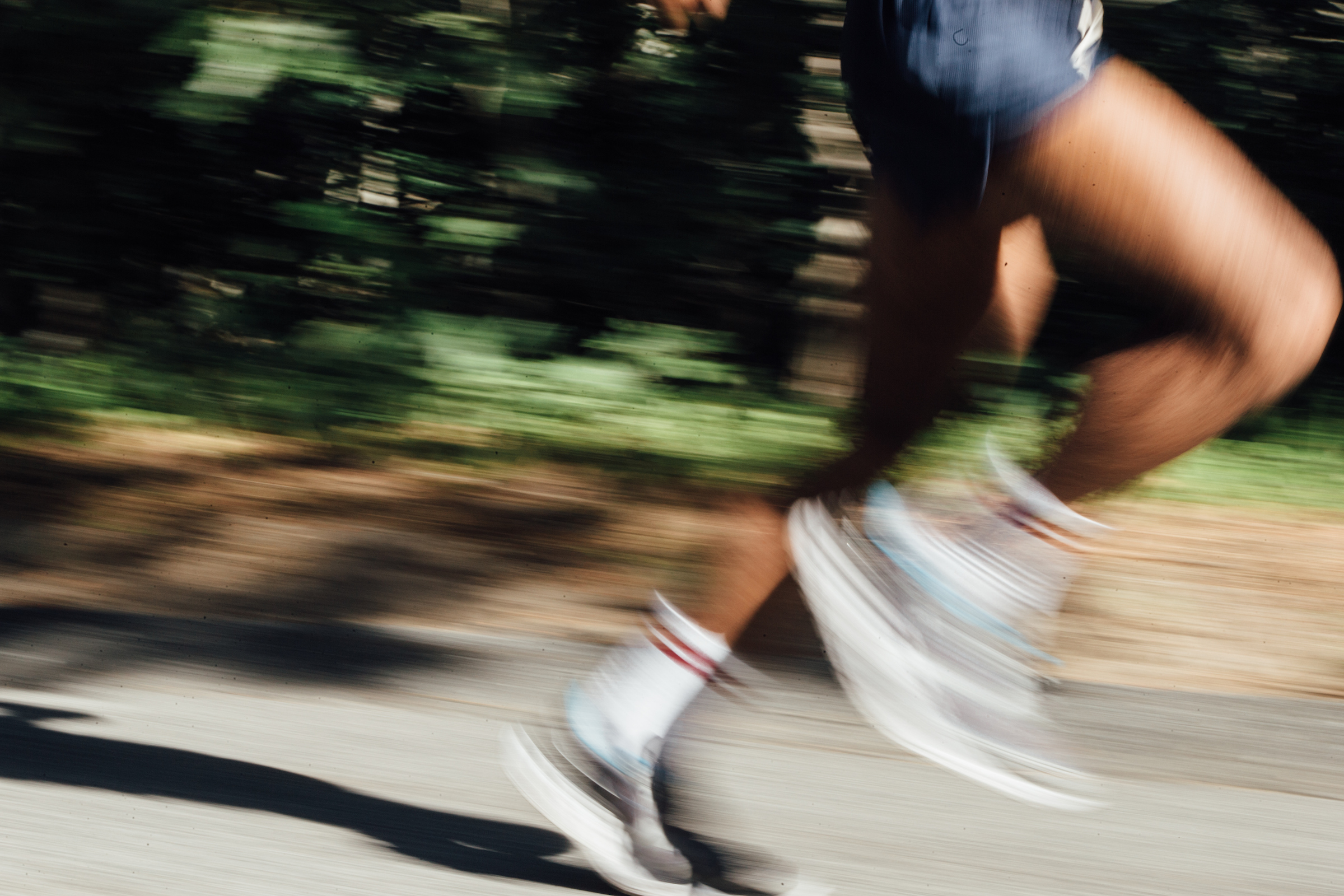
THE MAGIC IS IN YOUR LEGS, NOT THE NUMBER
Words by Andy Waterman
Photography by Emily Maye
For a long time I believed race numbers had magical properties. Four safety pins and a piece of card with a printed number on it was all it took to unlock paces that were impossible to reach on no-number days. If anything, pinning a number to my chest unleashed a side of my physiology I didn’t know how to control; I had to learn to tame the beast that would urge me to run at mile PR pace at the start of a 10k, just because for two or three glorious minutes, it felt possible. Reality always catches you eventually, usually before halfway, with oxygen debt dumping you backwards through the field in the negativity spin of positive splits.
Racing has long been my favorite form of training and through repetition I have learned to use the power in the pins to my advantage. Why subject yourself to a tempo when you could just run a low-key race? You almost never need to worry about motivation when there’s someone to chase and someone chasing you. And by racing regularly, you get a guaranteed workout and the chance to experiment with pacing strategies that are clearly sub-optimal, but feel exciting in the moment.

Racing is running; running is racing.
Or at least, it was. This period without races has taught me that I also use racing as a crutch. I almost never subjected myself to a tempo because there was always a race a few days away. I never needed to call upon internal motivation because the external motivation of a race was always there.
For the first few weeks of lockdown, I enjoyed the relative freedom of being able to run without any races coming up, but as the weeks turned to months and as the imminent fear of the illness subsided, the urge to go faster reappeared. With it came a boon in virtual racing.
Here in the UK, where I live, many of the virtual races have been held as mob matches: one club challenging another to race a set distance over a course of each individual’s choice, as measured on Strava, with cross-country scoring determining the winning team. My club recently competed against another local group over five miles. We had five days in which to run the distance so as to avoid forcing people to run at the busiest, least socially-distanced times.
Without a start time, a start line, numbers or competition, how would it feel? Would it feel like a race, or a particularly hard tempo? For four days I procrastinated, waiting to wake up one morning feeling like I had the effort bursting out of me. It never happened. So on the fifth and final day, I set off before breakfast to make my effort.
I chose my route carefully - a 2.1 mile loop that was flat and rarely sees much foot traffic - and picked my start and finish points to make the most of the wind. I warmed up well, consumed a gel, and stashed my long sleeve Harrier in a bush, hopeful it would still be there in 30 minutes time. Hopefully less.
On the occasions when I have tried to run a tempo, I’ve nearly always found it difficult to get on pace; I hover on the edge of discomfort, never truly feeling like my legs could go any faster. In a race, it’s the opposite. Here, without a number or any other outward signifiers that I was racing, I still found the sensation tipped in the direction of racing. The second I pressed start on my Garmin, I felt different. I wasn't just running, I was racing. Prior to setting off, I was just hoping to maintain six minutes per mile; when I went through the first mile in 5:40, it was just the boost I needed.
As the miles wore on, and the effort got harder, I thought about my teammates and the impressive performances they had already produced. The fourth mile was a struggle, taking in the only elevation of the loop as well as being entirely into a headwind. I pictured the times they had recorded and conducted oxygen-deprived mental arithmetic to work out where I might place among the runners I judge myself against. Comparison spurred me on. The final mile, run with a tailwind, was my fastest of the race.
The final time was 28:51. Not fast enough to put me in the top 12 scorers for my team, but fast enough for me to hold my head high. Fast enough, too, to make me question my aversion to running hard on my own, and the idea that I need a race number to truly get the best out of myself. It's possible I'd have gone sub-28 in a real race, on a good day, but I've had much worse performances in real races too. The time was about par.
Racing is racing, real or virtual, number or not. Maybe the magic was in my legs all along?